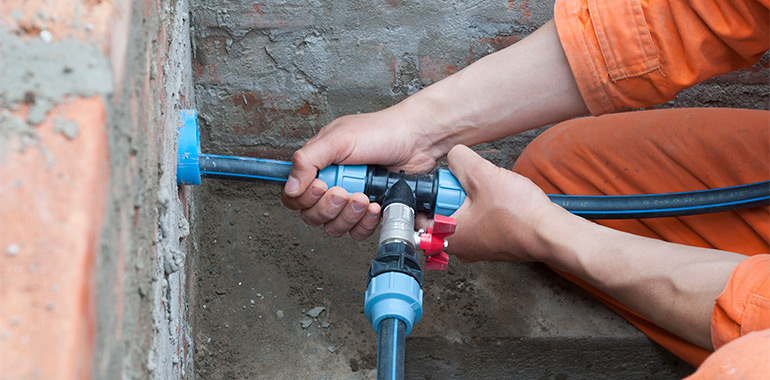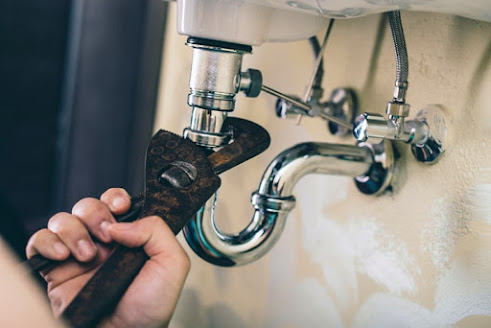What're your opinions on Diagnose Unwanted Plumbing Noises?

To identify noisy plumbing, it is necessary to figure out first whether the undesirable noises occur on the system's inlet side-in various other words, when water is transformed on-or on the drain side. Sounds on the inlet side have actually varied reasons: extreme water pressure, used valve and also tap parts, poorly linked pumps or other devices, incorrectly positioned pipe bolts, as well as plumbing runs containing way too many tight bends or various other limitations. Sounds on the drain side generally come from poor place or, as with some inlet side sound, a layout having tight bends.
Hissing
Hissing sound that happens when a tap is opened somewhat usually signals extreme water stress. Consult your regional public utility if you think this trouble; it will have the ability to tell you the water stress in your area and also can install a pressurereducing shutoff on the incoming water system pipe if needed.
Various Other Inlet Side Noises
Creaking, squealing, scratching, breaking, and tapping generally are caused by the development or contraction of pipes, usually copper ones supplying hot water. The noises take place as the pipes slide against loose bolts or strike neighboring house framing. You can typically identify the place of the issue if the pipelines are revealed; just comply with the audio when the pipes are making noise. Probably you will certainly uncover a loosened pipe hanger or an area where pipelines exist so near flooring joists or other framing pieces that they clatter against them. Connecting foam pipeline insulation around the pipelines at the point of call should fix the issue. Make certain straps as well as wall mounts are safe and secure and offer appropriate assistance. Where possible, pipe fasteners must be affixed to massive structural aspects such as structure wall surfaces rather than to mounting; doing so decreases the transmission of resonances from plumbing to surfaces that can amplify as well as transfer them. If connecting bolts to framework is inescapable, wrap pipes with insulation or other durable material where they call bolts, and also sandwich completions of brand-new bolts in between rubber washers when installing them.
Dealing with plumbing runs that deal with flow-restricting limited or countless bends is a last resource that needs to be taken on just after seeking advice from a proficient plumbing specialist. Sadly, this circumstance is fairly common in older residences that might not have actually been developed with indoor plumbing or that have seen numerous remodels, specifically by novices.
Chattering or Screeching
Extreme chattering or shrilling that happens when a valve or faucet is activated, which typically disappears when the installation is opened totally, signals loose or defective inner components. The service is to replace the shutoff or tap with a new one.
Pumps and devices such as cleaning devices and dish washers can transfer motor sound to pipelines if they are improperly attached. Connect such items to plumbing with plastic or rubber hoses-never inflexible pipe-to isolate them.
Drain Noise
On the drainpipe side of plumbing, the chief goals are to remove surfaces that can be struck by falling or hurrying water as well as to shield pipelines to contain inescapable noises.
In new building and construction, tubs, shower stalls, toilets, as well as wallmounted sinks and containers ought to be set on or versus durable underlayments to reduce the transmission of audio with them. Water-saving commodes as well as taps are less loud than traditional models; mount them rather than older types even if codes in your location still allow using older components.
Drainpipes that do not run vertically to the cellar or that branch into straight pipeline runs supported at flooring joists or other mounting existing particularly frustrating noise problems. Such pipelines are large sufficient to radiate substantial vibration; they also bring significant quantities of water, which makes the scenario worse. In brand-new building, specify cast-iron soil pipes (the big pipes that drain pipes toilets) if you can manage them. Their massiveness consists of much of the sound made by water passing through them. Additionally, avoid transmitting drainpipes in wall surfaces shared with bed rooms and spaces where individuals collect. Walls having drainpipes need to be soundproofed as was described earlier, making use of double panels of sound-insulating fiber board and wallboard. Pipelines themselves can be wrapped with special fiberglass insulation created the purpose; such pipelines have an impervious vinyl skin (occasionally containing lead). Outcomes are not constantly acceptable.
Thudding
Thudding sound, often accompanied by trembling pipelines, when a faucet or home appliance shutoff is turned off is a condition called water hammer. The sound and vibration are brought on by the reverberating wave of pressure in the water, which unexpectedly has no area to go. Occasionally opening a valve that releases water promptly right into an area of piping containing a restriction, elbow joint, or tee installation can create the very same problem.
Water hammer can usually be cured by installing fittings called air chambers or shock absorbers in the plumbing to which the issue valves or taps are linked. These tools permit the shock wave developed by the halted circulation of water to dissipate in the air they contain, which (unlike water) is compressible.
Older plumbing systems may have short vertical sections of capped pipe behind walls on faucet runs for the exact same function; these can ultimately full of water, minimizing or ruining their performance. The treatment is to drain pipes the water supply totally by shutting off the main supply of water valve as well as opening all taps. After that open up the major supply shutoff and also shut the taps one at a time, starting with the faucet nearest the valve and ending with the one farthest away.
WHY IS MY PLUMBING MAKING SO MUCH NOISE?
This noise indeed sounds like someone is banging a hammer against your pipes! It happens when a faucet is opened, allowed to run for a bit, then quickly shut — causing the rushing water to slam against the shut-off valve.
To remedy this, you’ll need to check and refill your air chamber. Air chambers are filled with — you guessed it — air and help absorb the shock of moving water (that comes to a sudden stop). Over time, these chambers can fill with water, making them less effective.
You’ll want to turn off your home’s water supply, then open ALL faucets (from the bathroom sink to outdoor hose bib) to drain your pipes. Then, turn the water back on and hopefully the noise stops! If you’re still hearing the sound, give us a call to examine further.
Whistles
Whistling sounds can be frustrating, as sometimes the source isn’t easily identified. However, if you can pinpoint which faucet or valve that may be the cause, you’ll likely encounter a worn gasket or washer — an easy fix if you replace the worn parts!Whistling sounds from elsewhere can mean a number of things — from high water pressure to mineral deposits. Your best plan of attack here is to give our plumbing experts a call. We’ll be able to determine where the noise is coming from and what the cause may be, then recommend an effective fix!
Cracks or Ticks
Cracking or ticking typically comes from hot water going through cold, copper pipes. This causes the copper to expand resulting in a cracking or ticking sound. Once the pipes stop expanding, the noise should stop as well.
Pro tip: you may want to lower the temperature of your water heater to see if that helps lessen the sound, or wrapping the pipe in insulation can also help muffle the noise.
Bangs
Bangs typically come from water pressure that’s too high. To test for high water pressure, get a pressure gauge and attach it to your faucet. Water pressure should be no higher than 80 psi (pounds per square inch) and also no lower than 40 psi. If you find a number greater than 80 psi, then you’ve found your problem!
Next step is to give us a call in order to install a pressure regulator. Trust us, you don’t want to wait to resolve this issue. Not only is the sound annoying, but high water pressure can be destructive to your home — including damaging certain appliances, like your washer and dishwasher.
Dripping
You might be accustom to the slow quiet drip your kitchen faucet makes. You might have even tuned out your bathroom sink dripping and drabbing all day long — but it’s time to find its cause.
A slow drip could signify a variety of easy to fix issues, such as a worn out O ring, or loose part. And by ignoring the drip, you could be wasting up to 2,000 gallons of water a year! So start conserving water — get it looked at ASAP.
https://www.pwessig.com/blog/2018/december/why-is-my-plumbing-making-so-much-noise-/

Do you like more info about Why Your Water Pipes Are Noisy and How To Shut Them Up? Create a short review down the page. We will be interested to know your feelings about this blog posting. We hope that you visit us again before long. Don't hesitate to take a moment to share this blog if you enjoyed reading it. Thank you for going through it.
Make An Appointment